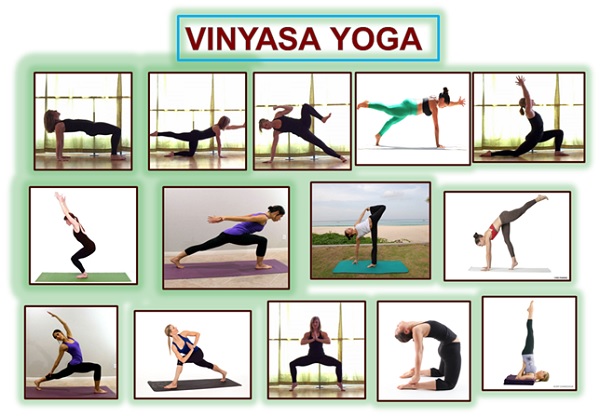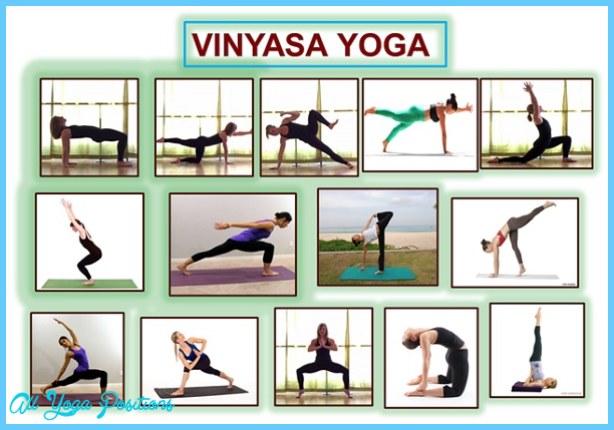
Here are some questions you can ask yourself before finding a class: There are many different varieties of vinyasa yoga. Whether you find videos online or instructors in your area, the only way you’ll know if vinyasa is a good fit is if you try it firsthand. There really is only one way to know: take a class. (It’s become a smidge less popular over the years as a result of controversy surrounding its founder.Many yoga instructors will help a newcomer to yoga by explaining the poses, the transitions, and alignment as thoroughly as possible.

It’s not as “flowy” as a Vinyasa-esque hot yoga class, but it’s a mega-workout nonetheless. With this type of yoga, the room is heated to 105 degrees and you move through the same specific sequence of 26 poses and two breathing exercises every class. “And if you want a really intense physical challenge, working out in a hot room will do it.”īikram is a branded type of yoga that was created by Bikram Choudhury. “The heat does help you get deeper into a pose,” says Burns.

You’ll leave feeling longer, looser, and relaxed. The room is typically heated to anywhere from 95 to 105 degrees, depending on the studio. Think: flowing through poses in coordination with your breath. “With a hot yoga class, you’re looking at a Vinyasa class or a power class with heat,” says DeSisto. Many people think hot yoga and Bikram are one and the same - they’re not. In a Mysore class, you already know the sequence and do it on your own, with support from a teacher if needed. In a led class, a teacher guides you through the sequence. You’ll often see two types of Ashtanga classes offered: led style and Mysore style. “A benefit of returning to the exact same sequence of poses is that you get to feel your body change and make progress over time,” says Burns. A class will start with sun salutations and then move into a set sequence of standing poses and floor poses.
#VINYASA YOGA SERIES#
What differentiates Ashtanga from other types of yoga is the set series of postures every single time. “This is what was brought to the West first, then people took it in different directions,” says Burns. “There is some flow between poses, and then you do hold certain poses for five breaths - it’s a blend between flow and isometric holds,” says Burns.Ī lot of what you see in a Vinyasa classes actually stems from Ashtanga. Ashtanga is a physically demanding practice that synchronizes movement with breath. Some consider Ashtanga the OG of yoga, since it’s one of the longest-practiced forms and is based on ancient teachings. “If you’re more interested in moving your body and working things out, Vinyasa is your jam.” “So, if you really want time to experience a posture, Hatha is the way to go,” says DeSisto. Hatha is similar to Vinyasa (more on that in a second) - just slower.

In a Hatha class, you start with a gentle intro to a variety of basic yoga postures and then move through a sequence of poses, holding each for a few breaths. (The other branches are nonphysical.) “But in Western civilization, if someone says Hatha, they mean slow flow or gentle flow yoga,” says Burns. So technically, any yoga where you’re moving your body is Hatha. “Hatha” means yoga of sensation or of movement. Hatha yogaĪccording to traditional yoga philosophy, there are six branches of yoga.

Here are some common (and a few new and trendy) types of yoga you can expect to see in studios and gyms or online. But rest assured, you’ll find your yoga soulmate - or maybe even a few! “Most classes you walk into will usually have a warmup, often based around sun salutations, then you’ll work toward some sort of focus posture or focus flow, and then you’ll have a cooldown,” explains DeSisto.įinding your ideal yoga type is a little like dating: It’s not one-size-fits-all, and everyone has unique needs. The structure of all yoga types is similar as well. To view yoga as a whole, consider that “it’s ultimately about breath work related to physical postures (or asanas),” says Kate DeSisto, a CYT-250 yoga instructor with additional certifications in aerial and SUP yoga. “There’s also a big emphasis on being present on your mat and making space for anything you’re feeling in your physical and emotional space.” “Whether it’s a power flow class, a prenatal yoga class, or a Yin class, all of them go for creating a connection between your mind, your body, and your breath,” says Sarah Burns, a Memphis-based E-RYT 200 yoga instructor. The physical practice of yoga takes many forms - but what factors make them all yoga?


 0 kommentar(er)
0 kommentar(er)
